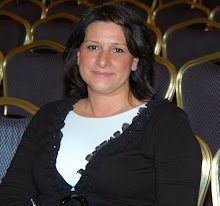 "Statistics Confirm Rise in Childhood ADHD and Medication Use
"Statistics Confirm Rise in Childhood ADHD and Medication UseEducation World examines the rise in the number of prescriptions written for stimulant medication to treat ADHD -- an increase of 500 percent since 1991, according to the Drug Enforcement Administration.
Included: Highlights of research tracking the rise of childhood ADHD and medication use.
Recent research investigations confirm what school administrators and teachers have realized for many years: The number of kids taking psychotropic medication has increased substantially in recent years. That increase is consistent with the rising number of kids diagnosed with ADHD.
Psychotropic medications treat a variety of behavior, emotional, and mental disorders, including ADHD.
Most children treated with medication for ADHD are prescribed stimulant medication, such as methylphenidate (Ritalin is the brand name). Stimulants increase nervous system alertness by stimulating neurotransmitters in the brain, according to the Academy of Child and Adolescent Psychiatry (AACAP). When used, the stimulant helps a child who has ADHD focus and reduces the child's excess fidgeting and hyperactivity.
The increase in the number of prescriptions doctors write for treating ADHD is staggering. According to the Congressional Testimony of Terrance Woodworth, a deputy director of the Drug Enforcement Administration, the number of prescriptions written for methylphenidate has increased by a factor of five since 1991. About 80 percent of the 11 million prescriptions doctors write for that medication each year treat childhood ADHD, he said. In addition, production of Adderall and Dexedrine, also used to treat ADHD, has risen 2,000 percent in nine years.
The increasing use of stimulant medication to treat ADHD in the United States differs significantly from practices in the rest of the world, according to United Nations data, Woodworth said. The U.S. produces and consumes about 85 percent of the world's production of methylphenidate.
The significant increase in stimulant medication prescribed to children has raised concerns that our society is choosing quick-fix remedies to treat ADHD. "How we deal with our kids' problems reflects our thinking and a much larger problem in our culture," said Lawrence H. Diller, who practices behavioral pediatrics in California and is author of Running on Ritalin: A Physician Reflects on Children, Society and Performance in a Pill.
Although Diller prescribes stimulant medication for children with ADHD, he questions the large number of children currently on the medication in the United States.
INCREASED DRUG USE FOR KIDS OF ALMOST ALL AGES
The use of stimulant medication is not seen just in school-aged children. The number of preschool children using stimulant medication for ADHD has increased significantly as well.
A study, Trends in the Prescribing of Psychotropic Medications to Preschoolers, published in the Journal of the American Medical Association, found that psychotropic medication use tripled in preschool children ages two to four over a five-year span.
The researchers also stated that though the use of methylphenidate had significantly increased among all age groups, it had increased by 311 percent for 15- through 19-year-olds during the past 15 years. Use among children ages 5 to 14 increased by approximately 170 percent."
Link to full article: http://www.education-world.com/a_issues/issues148a.shtml
Famous People with Learning Disabilities
"Albert Einstein showed learning disability. He was a ‘below average’ student at school. He could not speak until he was three and was weak in Math. He grew up to become one of the greatest Mathematicians.
Other famed people with learning disabilities were Alexander Graham Bell and Thomas Edison. Edison found difficulty in reading until he was twelve and in writing, even after that.
It is believed that Leonardo Da Vinci, needless to say who he was, was dyslectic. Sylvester Stallone, Cher, Tom Cruise, Mozart and Robin Williams, who are enlisted as being famous in the field of art, have been victims of learning disabilities.
Lewis Carroll, famous for authoring ‘Alice in Wonderland’, suffered from a stammer in speech. George Bernard Shaw is reported to have had an Attention deficit disorder.
Suzanne Somers, famous for her work in ‘Three’s company’ was a poor student at school and was diagnosed of dyslexia. A relatively recent example of a learning disability is Phillip Manuel, a famous jazz vocalist who was identified of having AD/HD in the year 2000.
The very well known Napoleon Bonaparte had to struggle with dyslexia. Winston Churchill, who is famous for leading Great Britain during World War II, suffered from speech impediment during his childhood.
Woodrow Wilson did not learn the alphabet until an age of nine and was unable to read until an age of twelve. This shows that he probably had a learning disability.
We know of Jackie Stewart. He has described in his biography, his dyslexia. He has written about his inferiority complex at school and how he overcame it.
Bruce Jenner, the world’s greatest athlete as he was called, had fallen prey to learning disabilities.
Business Entrepreneurs like Richard Branson, David Neeleman and Charles Schwab were dyslexics. Donald Winkler, defeating his dyslexia, inspired many to become successful.
The Indian movie, "Taarein Zameen Par", brought learning disabilities in children under the Spotlight and counseled parents about how they should react to children exhibiting such disabilities.
Actor Aamir Khan was shown to illustrate the learning disabilities in some well-known people, thus rousing the parents all over the world to realize the possibility of some very unique talent to stem out of their kids!
The movie also tries to comfort children with learning disabilities and here were some examples of some famous people who had learning disabilities when they were young.
All the celebrities mentioned above and those left unmentioned had one commonality of striving towards success and attaining it, in spite of their learning disabilities.
Feelings of shame, fear, depression and loneliness are evident in dyslexics.
These famous people got over all these negativities and conquered not only their disabilities but also the world, by winning hearts and becoming inspirers for the aspirants world over!"
Link to full article: http://www.adhdsignsandsymptoms.com/robin-williams-with-adhd
The Wall Street Journal on 18th May 2009 Published and article written by David Armstrong titled Children Use Of Psychiatric Drugs Begin To Decelerate.
Link to article: http://online.wsj.com/article/SB124260376459428599.html


















No comments:
Post a Comment